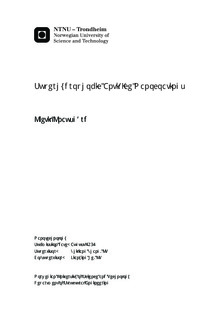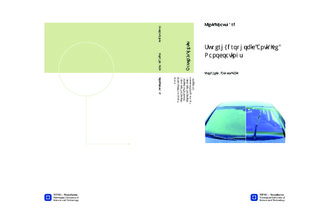| dc.description.abstract | Atmospheric icing from supercooled droplets in the atmosphere can have catastrophic consequences for a number of man-made structures in regions with cold climate and at high altitude, resulting in accidents with both socioeconomic losses and loss of human lives. To mitigate the icing problem, active de-icing involving chemical, thermal and mechanical techniques have been developed to remove ice that has already accumulated. These techniques are sub-optimal, however, as they are plagued with problems such as high energy consumption, hazard to the environment, high economic costs, and need for frequent reapplication. This thesis takes a look at an entirely different approach, namely utilizing superhydrophobic surfaces to reduce or eliminate the accumulation and adhesion of ice from the outset. Much of the research in the field of superhydrophobicity has involved surfaces with open-cell structures, e.g. pillar-like surfaces and surfaces with bumps and valleys. It has been reported that surfaces with closed cells have a comparative advantage in that they are better at retaining their hydrophobic properties under pressure. This thesis investigates the wetting properties (which are often closely tied to icephobic properties) of closed-cell structures further, using LAMMPS simulations. The simulations show that wetting on these surfaces satisfies the well-known theories of Wenzel and Cassie-Baxter. However, on the small scale on which the simulations were carried out, the effect of tuning the roughness scale is not as predicted by theory. Furthermore, no comparative advantage against open-cell structures could be demonstrated for the closed-cell surfaces. A physical experiment was also carried out, in which the influence of water condensation on the dynamic behavior of water droplets on a nearly-superhydrophobic black silicon surface was tested. The results confirm a well-known problem: Condensation severely deteriorates the water repellency of hydrophobic surfaces. The literature review and experiments in this thesis shows that superhydrophobic surfaces have a great potential for use in anti-icing applications, demonstrating delayed freezing, reduced ice accumulation, and reduced ice adhesion. Nevertheless, major problems are yet to be solved, including deterioration of icephobicity due to mechanical damage, and reduced icephobicity in humid conditions. | nb_NO |

